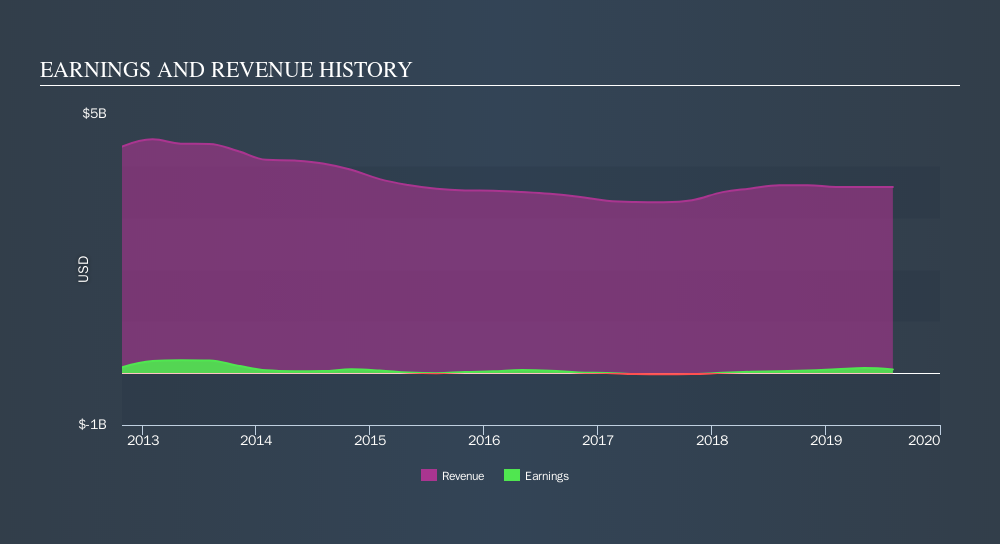- United States
- /
- Specialty Stores
- /
- NYSE:ANF
How Does Investing In Abercrombie & Fitch Co. (NYSE:ANF) Impact The Volatility Of Your Portfolio?

Anyone researching Abercrombie & Fitch Co. (NYSE:ANF) might want to consider the historical volatility of the share price. Volatility is considered to be a measure of risk in modern finance theory. Investors may think of volatility as falling into two main categories. The first category is company specific volatility. This can be dealt with by limiting your exposure to any particular stock. The other type, which cannot be diversified away, is the volatility of the entire market. Every stock in the market is exposed to this volatility, which is linked to the fact that stocks prices are correlated in an efficient market.
Some stocks see their prices move in concert with the market. Others tend towards stronger, gentler or unrelated price movements. Beta is a widely used metric to measure a stock's exposure to market risk (volatility). Before we go on, it's worth noting that Warren Buffett pointed out in his 2014 letter to shareholders that 'volatility is far from synonymous with risk.' Having said that, beta can still be rather useful. The first thing to understand about beta is that the beta of the overall market is one. A stock with a beta below one is either less volatile than the market, or more volatile but not corellated with the overall market. In comparison a stock with a beta of over one tends to be move in a similar direction to the market in the long term, but with greater changes in price.
Check out our latest analysis for Abercrombie & Fitch
What we can learn from ANF's beta value
With a beta of 0.92, (which is quite close to 1) the share price of Abercrombie & Fitch has historically been about as voltile as the broader market. If the future looks like the past, we could therefore consider it likely that the stock price will experience share price volatility that is roughly similar to the overall market. Many would argue that beta is useful in position sizing, but fundamental metrics such as revenue and earnings are more important overall. You can see Abercrombie & Fitch's revenue and earnings in the image below.

How does ANF's size impact its beta?
Abercrombie & Fitch is a small company, but not tiny and little known. It has a market capitalisation of US$991m, which means it would be on the radar of intstitutional investors. Small companies often have a high beta value because the stock price can move on relatively low capital flows. So it's interesting to note that this stock historically has a beta value quite close to one.
What this means for you:
It is probable that there is a link between the share price of Abercrombie & Fitch and the broader market, since it has a beta value quite close to one. However, long term investors are generally well served by looking past market volatility and focussing on the underlying development of the business. If that's your game, metrics such as revenue, earnings and cash flow will be more useful. In order to fully understand whether ANF is a good investment for you, we also need to consider important company-specific fundamentals such as Abercrombie & Fitch’s financial health and performance track record. I urge you to continue your research by taking a look at the following:
- Future Outlook: What are well-informed industry analysts predicting for ANF’s future growth? Take a look at our free research report of analyst consensus for ANF’s outlook.
- Past Track Record: Has ANF been consistently performing well irrespective of the ups and downs in the market? Go into more detail in the past performance analysis and take a look at the free visual representations of ANF's historicals for more clarity.
- Other Interesting Stocks: It's worth checking to see how ANF measures up against other companies on valuation. You could start with this free list of prospective options.
We aim to bring you long-term focused research analysis driven by fundamental data. Note that our analysis may not factor in the latest price-sensitive company announcements or qualitative material.
If you spot an error that warrants correction, please contact the editor at editorial-team@simplywallst.com. This article by Simply Wall St is general in nature. It does not constitute a recommendation to buy or sell any stock, and does not take account of your objectives, or your financial situation. Simply Wall St has no position in the stocks mentioned. Thank you for reading.
About NYSE:ANF
Abercrombie & Fitch
Through its subsidiaries, operates as an omnichannel retailer in the United States, Europe, the Middle East, Asia, the Asia-Pacific, Canada, and internationally.
Very undervalued with outstanding track record.

